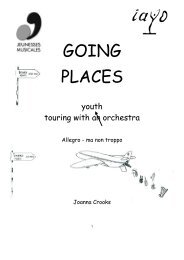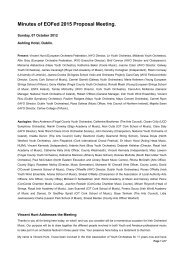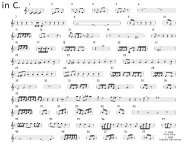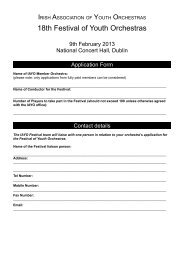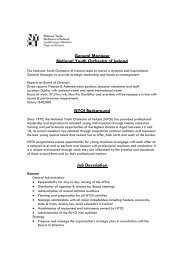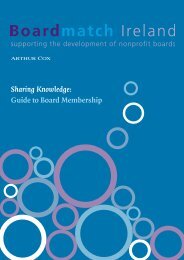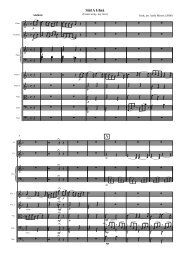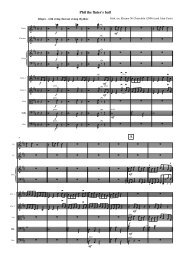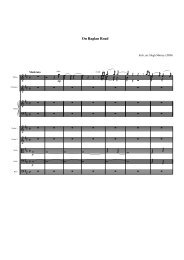A SOUND EAR II - Association of British Orchestras
A SOUND EAR II - Association of British Orchestras
A SOUND EAR II - Association of British Orchestras
You also want an ePaper? Increase the reach of your titles
YUMPU automatically turns print PDFs into web optimized ePapers that Google loves.
A <strong>SOUND</strong> <strong>EAR</strong> <strong>II</strong><br />
standing up and/or playing bells up<br />
Where high risers are not an option, the risks to both the players producing the noise and the folk in front <strong>of</strong> them<br />
may be reduced by standing up during critical passages. Players need to be able to raise the music stands as they get<br />
up. It is both showy and effective.<br />
Where standing up is not appropriate, brass players (and others) may pay some attention to the output <strong>of</strong> their<br />
instrument in relation to their neighbours. This will reduce pain and obliteration (being unable to hear your own<br />
instrument because <strong>of</strong> the volume <strong>of</strong> noise from neighbours) experienced by neighbours, and also reduce the degree<br />
<strong>of</strong> force required to produce the sound.<br />
improving forward projection from the horns<br />
American orchestras have used baffles, angled at 45º to the horizontal, behind the horns so as to deflect more <strong>of</strong><br />
their sound forward.<br />
sacrifice income to extend the stage, giving more space for clear soundlines,<br />
or to accommodate risers etc.<br />
Some ensembles have given up considerable box-<strong>of</strong>fice to create enough space for the orchestra: others pay to<br />
restore the extended stage to normal at the end <strong>of</strong> their run.<br />
Adjust playing stance<br />
• Play bells up<br />
• Keep your head straight - fiddles and violas can reduce exposures and musculo-skeletal risks by modifying their posture.<br />
Share the noise dose amongst two or more players<br />
This is a very expensive option, for a modest reduction in daily personal noise exposure (a 3dB reduction for a<br />
halving in the period <strong>of</strong> exposure).<br />
26<br />
Move people around, so they share The misery <strong>of</strong> sitting<br />
in noisy positions<br />
Neighbour noise does not dominate, but it can almost double your dose, and for many players the stress and pain<br />
<strong>of</strong> exposure from neighbours may be their major concern. Some orchestras have found this to be successful in<br />
reducing noise exposures and stress: others found that those who usually sat in noise hot spots were accustomed to<br />
it, while those who swapped-in were less able to tolerate the experience.<br />
Mark the score<br />
To a degree players can brace against a burst <strong>of</strong> loud noise from neighbours. They may have time to insert earplugs<br />
or fingers, or may at least prepare psychologically.<br />
Single rank the brass<br />
The brass are usually the most highly exposed, and the worst daily exposures came from the front <strong>of</strong> two rows.<br />
Within a programme or schedule, balance noisy pieces<br />
with something quieter<br />
Put noisy players somewhere else and mike them in<br />
<strong>Orchestras</strong> that tried this suffered from tiny but significant time delays introduced by the electronics



